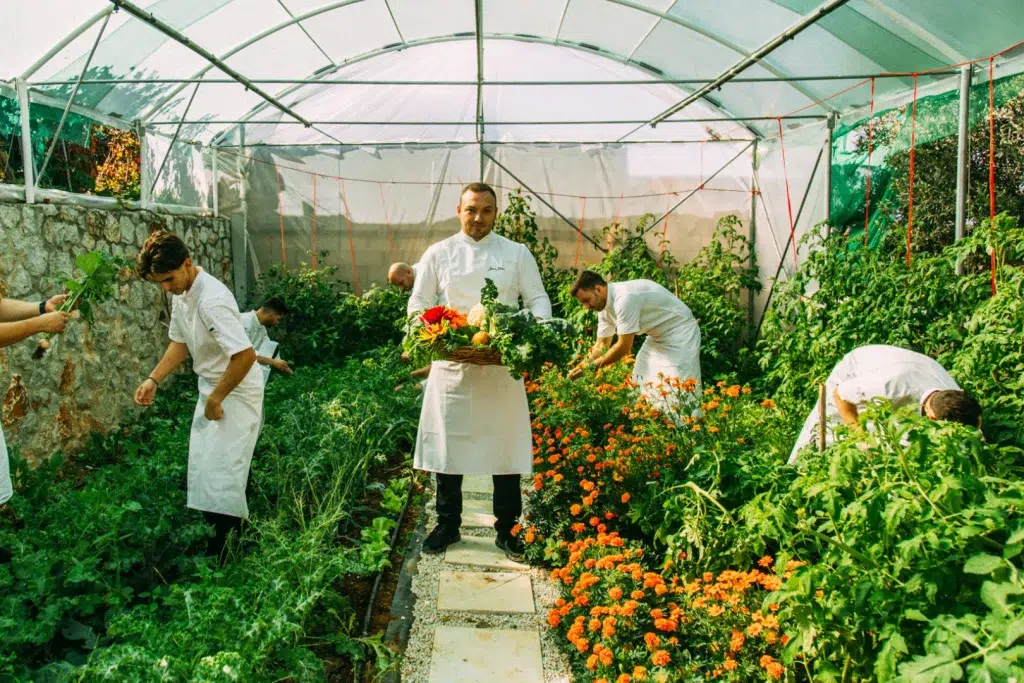Spring invites a softer rhythm. The markets shift colour. Bitter greens give way to tender leaves, herbs begin to bloom, and every ingredient suddenly seems lighter on the plate. It’s the season where freshness doesn’t just accompany a dish – it defines it and it defines the Bouquet from the Farm.
In this spirit, Chef Petros Dimas shares a recipe that captures the essence of the season: delicate, thoughtful, and quietly confident. The “Bouquet from the Farm” isn’t complex, but it is considered. Built around leaves, flowers, and a vinaigrette poured tableside, it reflects a philosophy where restraint becomes luxury.
Awarded a Michelin star in 2024, Petros brings his Athens childhood, his family’s organic farm in Ancient Corinth, and a career shaped by Europe’s finest kitchens into every dish. This recipe, lifted from the spring menu at Makris Athens, is meant to be recreated—not perfectly, but personally.
A bouquet, after all, is a gift. This one just happens to be edible.
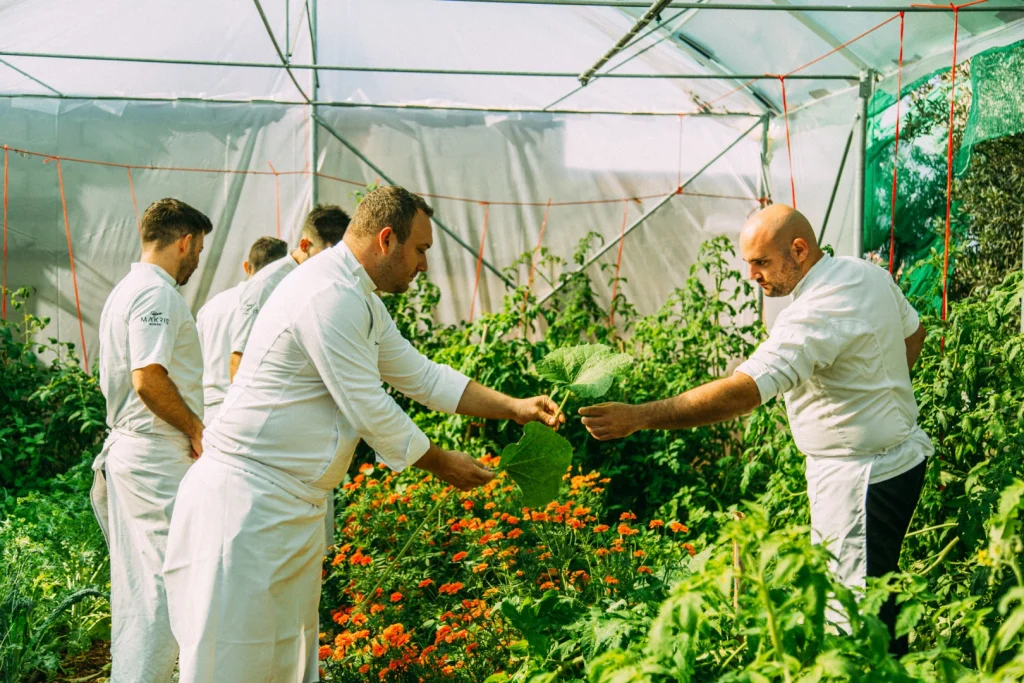
Meet the Chef – Petros Dimas
The story of Petros Dimas begins in Thissio, one of Athens’ oldest neighbourhoods, where ancient ruins and modern life share the same streets. Born in North Epirus and raised among the city’s open-air markets, he spent weekends on the family farm in Corinth, where food was grown, harvested, and eaten – never bought.
That direct link to nature shaped his perspective early. He went on to train at the LE MONDE Institute of Hotel & Tourism Studies, then refined his craft in several of Athens’ most celebrated kitchens: Varoulko Seaside, Hytra, and The Dalliance House. His path later led to London, where he held sous chef positions at Michelin-starred Pollen Street Social and Aquavit, before joining King’s Social House in St. Moritz, Switzerland.
But it was back in Greece, on the island of Corfu, where Petros began to shape something truly his own. At Makris by Domes, he introduced a culinary philosophy grounded in Greek tradition and contemporary restraint: local sourcing, minimal waste, and above all, ingredient integrity.
In 2023, Makris Athens opened its doors just opposite the Ancient Agora, a few blocks from where Petros once played as a child. Today, he cooks in the same streets that raised him, with produce from the same soil that nourished his earliest meals.
His food is not a return to the past – it’s a refinement of it. A way of looking forward without forgetting what was always good.
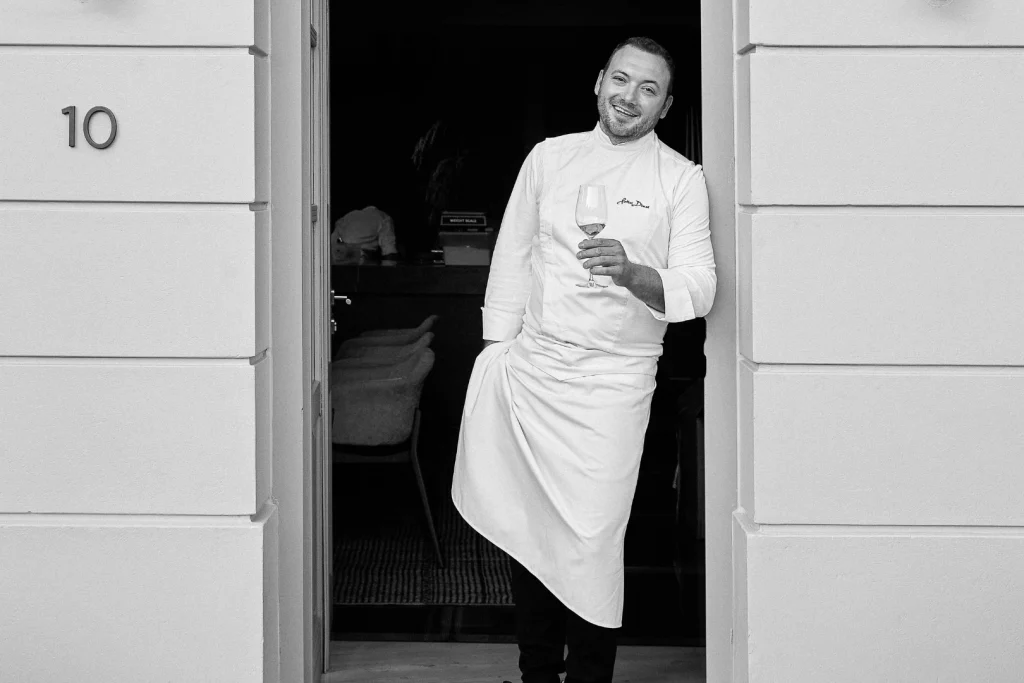
The Spirit of the Recipe
There are recipes that impress, and there are those that connect. The Bouquet from the Farm falls into the latter – born not from technique, but from observation. It’s a dish that speaks in gestures: soft textures, gathered leaves, restrained seasoning. It doesn’t declare. It suggests.
Inspired by the wild beauty of his family’s farm in Ancient Corinth, the bouquet is exactly that -a collection of what the land offers when left to speak for itself. Salad leaves, edible flowers, fresh herbs. All bundled by hand and tied not with string, but with chive stalks, as if the kitchen and the garden had met halfway.
The dish arrives tied and upright, placed at the centre of a soup plate. But it is not complete until the vinaigrette is poured – tableside, just before it’s served. It’s this final movement, small but intentional, that defines the dish. A blend of oil, vinegar, lemon, cheese, pear pearls and macadamia nuts gathers beneath the bouquet, gently seeping upward. The leaves soften just enough, the flowers hold, the textures remain.
More than a salad, it’s a seasonal moment you can serve. And one that asks nothing of the cook but care.
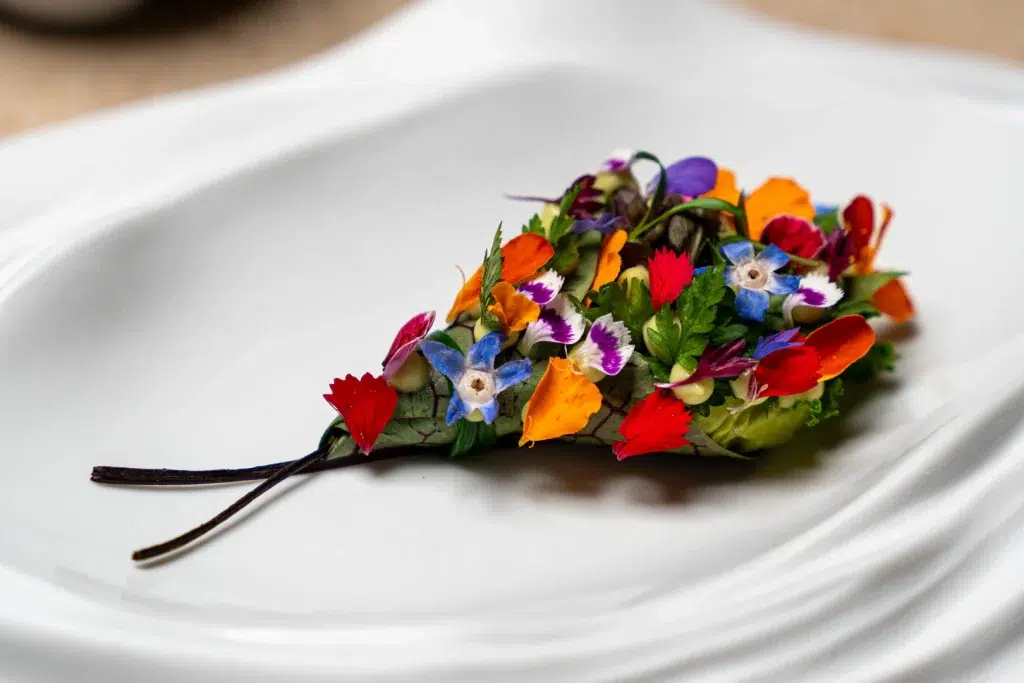
Ingredients & Philosophy
At its core, The Bouquet from the Farm is a study in simplicity. But as with all of Petros Dimas’ dishes, simplicity is never accidental – it’s built with structure and balance.
The Bouquet
- A selection of fresh, seasonal salad leaves
- A few vibrant edible flowers
- A handful of aromatic herbs
- 2–3 chive stalks, used to tie the bundle
Everything should feel alive. The mix changes with the seasons. What matters most is contrast – mild and peppery greens, soft and structured textures, colour and calm.
The Vinaigrette
- 10 ml extra virgin olive oil (ideally unfiltered, farm-sourced)
- 10 ml aged vinegar (a mild wine vinegar or apple cider variant)
- 5 ml lemon juice (freshly squeezed)
- 1 g salt
- 1 g pepper
- 10 g macadamia nuts, whole
- 10 g aged cheese (a parmesan-style, finely shredded)
- 10 g pear pearls (or very finely diced ripe pear)
The dressing is stirred gently—not shaken or blended—to keep the nuts and fruit intact. It’s less of an emulsion and more of a composition: each element visible, each bite slightly different.
On Sourcing
Petros encourages substitutions, as long as they honour the spirit of the dish. If you can’t find edible flowers, use delicate herb blossoms or vibrant greens. The cheese can shift. The pear can become apple. What matters is that it feels fresh, that it reflects where you are, and when.
The goal isn’t to replicate Makris—it’s to interpret it.
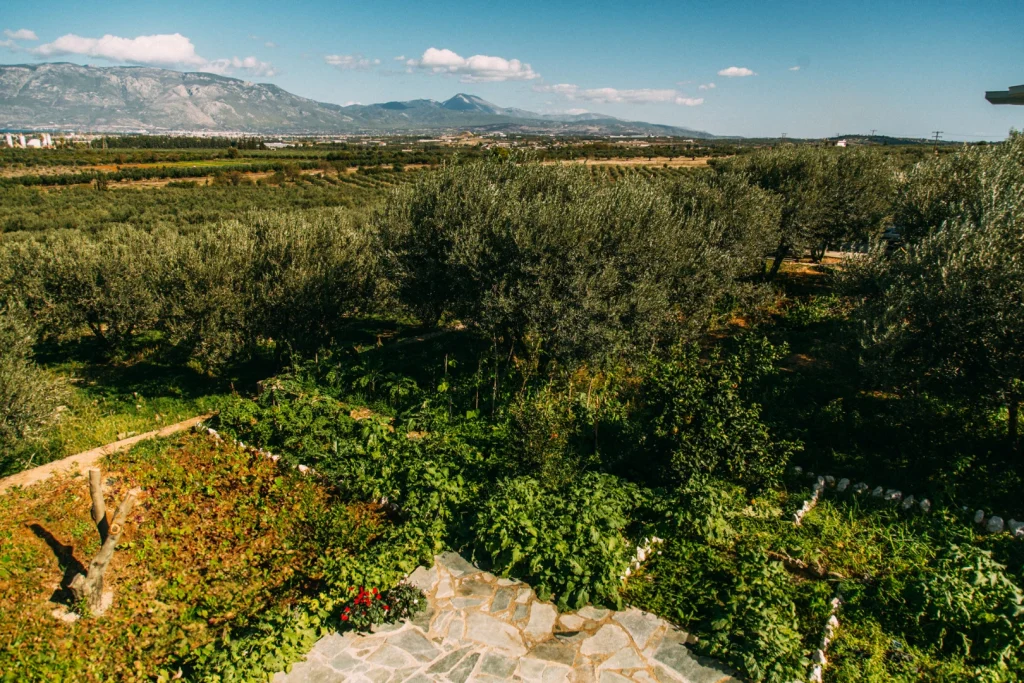
Step-by-Step – How to Create the Bouquet at Home
There’s something meditative about assembling this dish. It doesn’t require skill so much as attention. The ingredients do the work. Your role is to bring them together without overcomplicating the process.
Step 1: Select and Prepare the Leaves
Choose a variety of seasonal salad leaves. Think texture: frilly, rounded, soft, crisp. Rinse gently, dry thoroughly. Pick a handful of edible herbs (parsley, dill, chervil, tarragon) and flowers if available—nasturtiums, pansies, or herb blossoms.
Step 2: Form the Bouquet
Lay out the leaves and herbs like a miniature arrangement. Loosely bundle them so each layer is visible. The goal is not symmetry, but natural structure. Wrap 2–3 chive stalks around the stems and tie them in a gentle knot. No string, no toothpicks—just the plants holding themselves together.
Step 3: Mix the Vinaigrette
In a small bowl, stir together:
- 10 ml extra virgin olive oil
- 10 ml aged vinegar
- 5 ml lemon juice
- 1 g salt
- 1 g pepper
Add in:
- 10 g macadamia nuts (left whole)
- 10 g finely shredded aged cheese
- 10 g pear pearls (or micro-diced ripe pear)
Don’t whisk. Just gently fold. The ingredients should remain visible, each bite revealing something slightly different.
Step 4: Plating
Place the bouquet upright in the centre of a deep soup plate. Right before serving, pour the vinaigrette around the base – not over the top. The dressing will slowly rise through the leaves, flavouring without soaking.
Serve immediately, without explanation. Let the dish speak for itself.
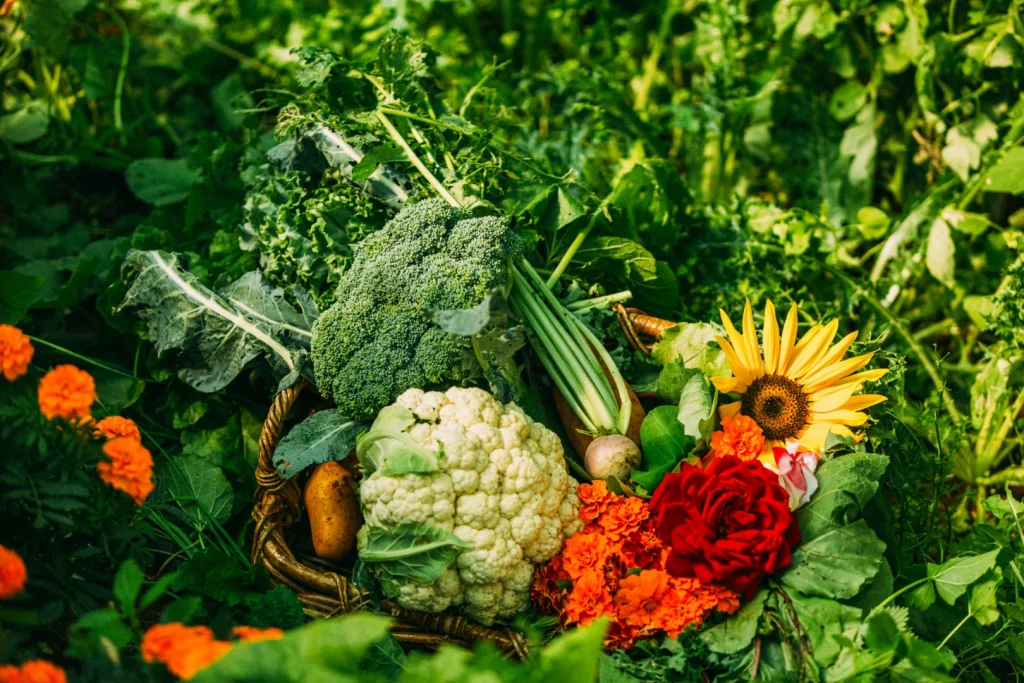
Bringing the Makris Experience Home
At Makris Athens, this dish is served as part of a larger narrative -one that begins in the soil of Ancient Corinth and ends in the heart of the city. But it loses none of its power when made at home. In fact, it gains something new: intimacy.
There’s no need for fine china or dimmed lights. What matters is the intention. The time you take to choose the herbs. The way you tie the chive stalks. The moment the vinaigrette touches the plate.
The Bouquet from the Farm isn’t about precision – it’s about presence. And in making it yourself, you become part of the story: of a chef who honours where he comes from, of a recipe that carries the memory of a landscape, and of a spring that asks us all to slow down and taste what’s here, now.
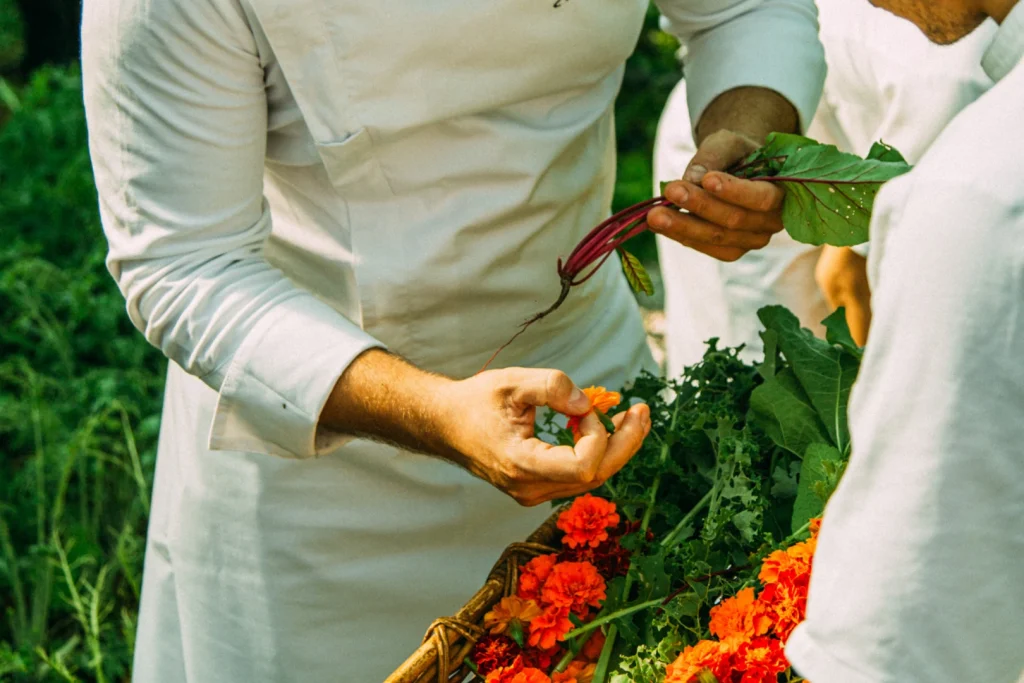
Simplicity as Luxury
There’s a certain kind of luxury that doesn’t need embellishment. It comes not from opulence, but from attention – from knowing where something came from, how it was handled, and why it matters.
The Bouquet from the Farm is a reminder of that. It isn’t about technique or presentation. It’s about intention. About the care it takes to do something simple, well.
In a world that moves quickly, this dish offers an alternative rhythm. One rooted in season, in soil, and in the decision to celebrate what is already enough. Petros Dimas doesn’t ask us to recreate Makris in our kitchens. He invites us to look more closely at what’s around us -and to cook with presence.
And sometimes, all it takes to feel connected -to a place, a person, a moment – is a handful of leaves, a ribbon of chive, and the soft movement of a dressing being poured.

